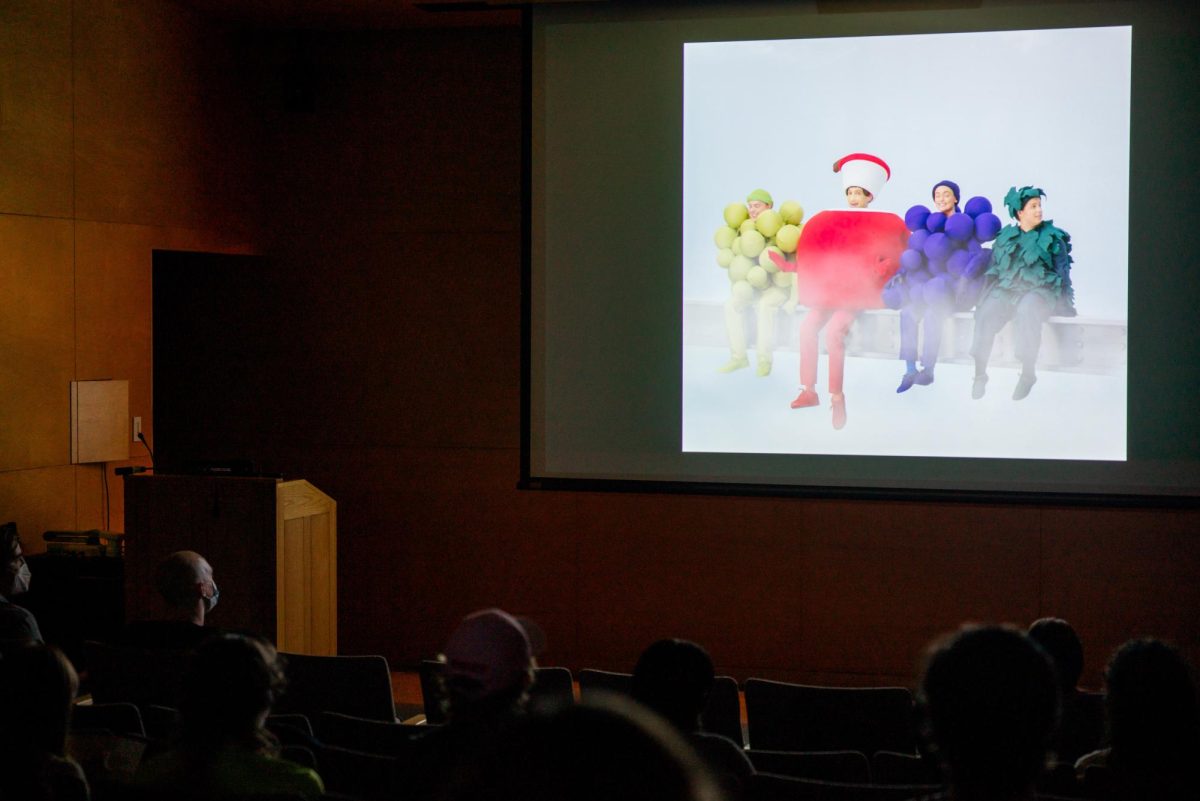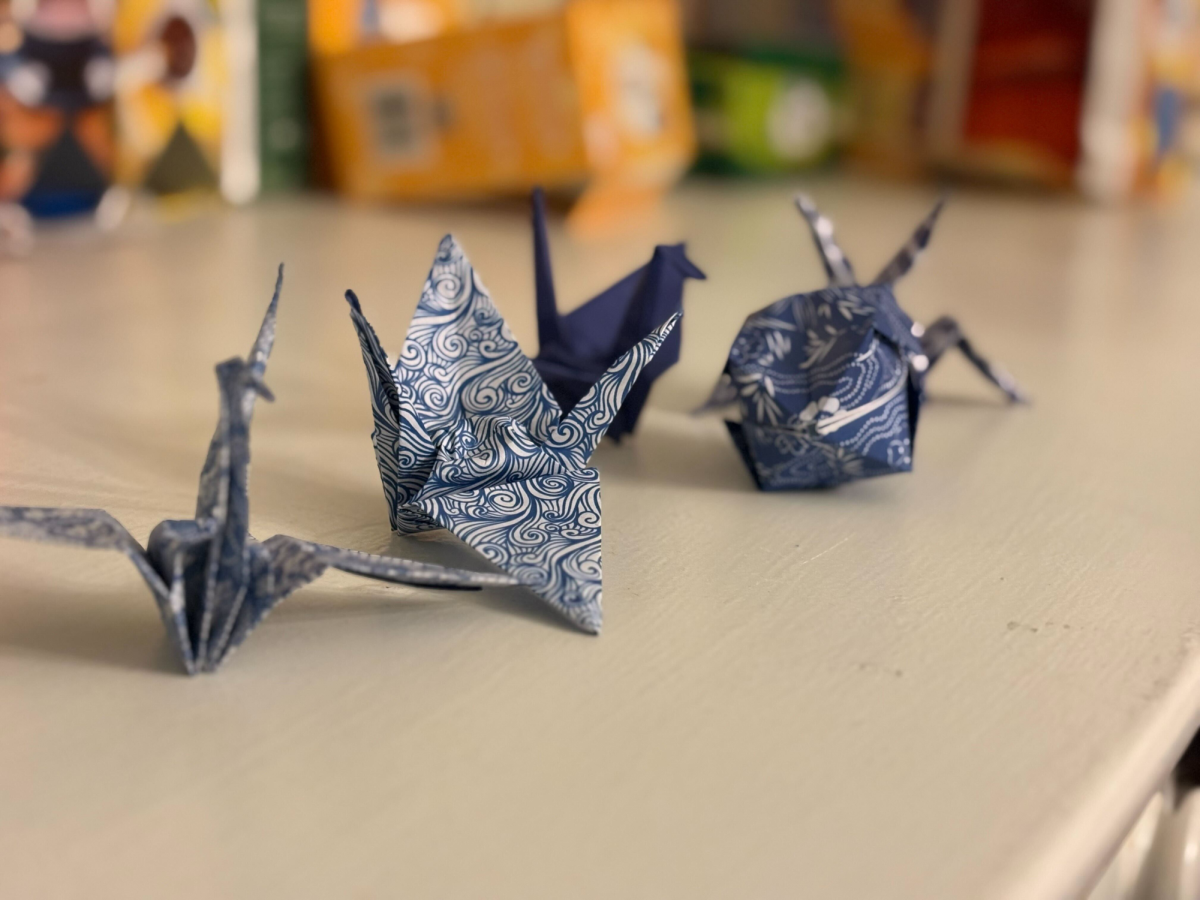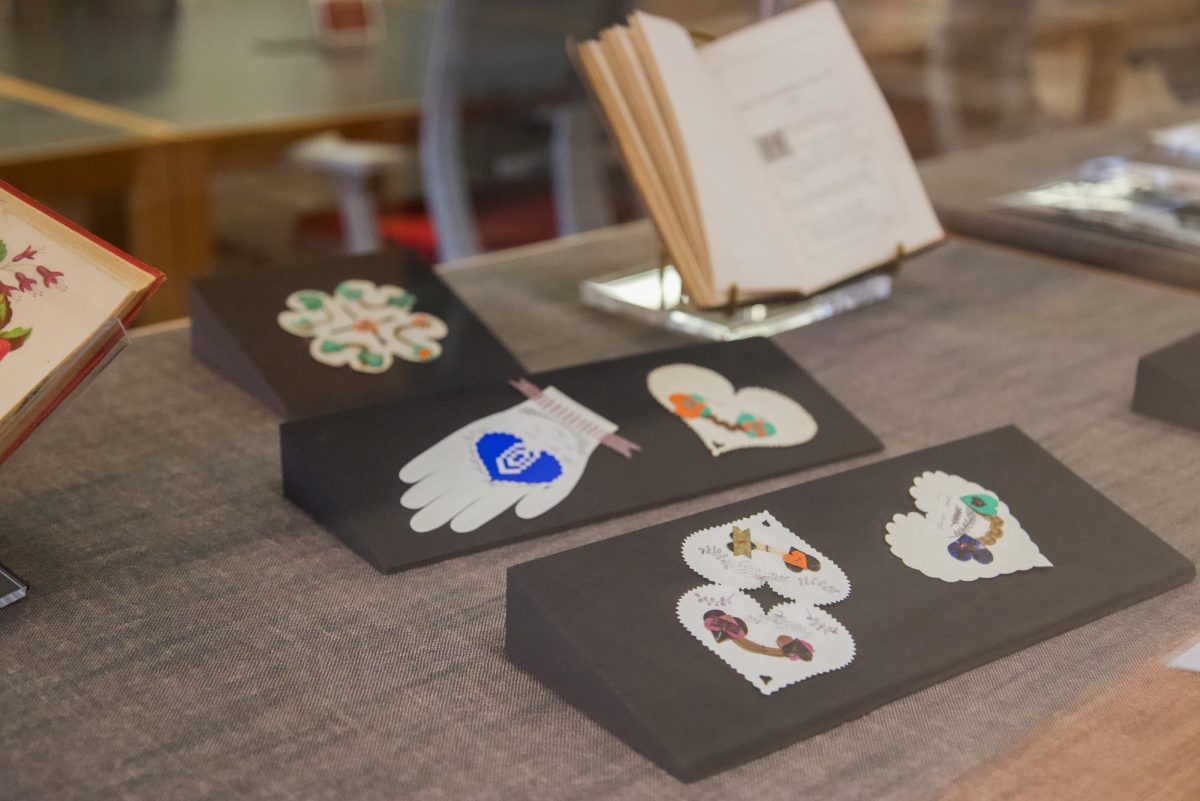Alex Da Corte, Philadelphia-based Venezuelan-American conceptual artist, drove to Oberlin Oct. 1 to present his nearly three-hour long film Rubber Pencil Devil. The film featured 57 distinct sequences presented alongside live commentary from the director.
Double-degree fifth-year Orson Abram, one of Oberlin Film Co-op’s presidents, reached out to Da Corte’s studio manager in July regarding the event’s proposed structure of combined screening and narration.
“Everyone’s going into this with a different notion of what it’s going to be like,” Abram said.
The film has been in the public eye for six years, exhibited at esteemed collections such as the Carnegie Museum in Pittsburgh; the Whitney Museum of American Art in New York; and now, Oberlin’s Hallock Auditorium.
“I’m deeply invested in pedagogy and a space for learning,” Da Corte said. “I didn’t really have access to those kinds of spaces when I was growing up, even as a young person wanting to understand how art works in the world. I didn’t understand it [because] I didn’t have any access to it. So if the studio or myself ever gets an invitation to participate [in something like this], I always say yes. It’s the most righteous place to be showing art and talking about it because it’s truly for everyone in that moment.”
He remarked on the format of this artist talk’s capacity to guide him.
“It hasn’t been shown in a way where there would even be discourse around it,” Da Corte said. “So it’s cool that Orson was interested in showing that work. I was like, ‘You know what? I’m up for the challenge. It’s going to be difficult for me, but I’m happy to do it.’”
Da Corte spoke on the idea of “letting the spirits move” him in preparation for this artist talk — in a way, parodying DVD-era “audio commentary,” where a director discussed their film for the viewer as it played.
“[It’s constant] relearning and reliving those moments and speaking to them,” Da Corte said. “That is me just trying to figure out how this works, and what it communicates and [if there is] value in it still. I can look at it critically and try to unpackage it.”
Audio commentary wasn’t the only thing Da Corte attempted to parody. In fact, the entire film building itself upon parodies which worked against the narrative of nostalgia and longing that might persist in the dialogue surrounding it.
Da Corte repossesses American icons like Mr. Rogers, Big Bird, Oscar the Grouch, and Pink Panther by “haunting something that’s already dead.”
These icons were pieces that brought many students, including College third-year Hayden Asiano, to view such a screening as unique and stay the whole two and a half hours.
“I think it was the Mr. Rogers with a Drunk Streetlight [replica from the film that stood out to me the most],” Asiano said. “It immediately popped out as something in the realm of camp, of recreating popular culture through some distorted lens.”
The string of words which make the title of the film Rubber Pencil Devil may elicit confusion in a person unfamiliar with Da Corte’s work. The title alludes to the rubber pencil phenomenon — a visual illusion in which a pencil appears to bend like rubber when moved quickly — and its relationship to the persistence of vision, which speaks to the state of the 21st century and the destabilization of images and icons.
“I would say I [think] about iconography in a similar way that [Ellen Johnson ’33 Curator of Modern and Contemporary Art] Sam Adams has thought about the host and the body [in The Body, The Host: HIV/AIDS and Christianity] and those icons of certain spirituality, and how they can mislead you, or how whole structures and peoples can be built upon particular iconographies that save them,” Da Corte said. “For some, that’s not applicable. I find that using icons that seem to be one way is to embody them and propose that they can be other ways. For me, I resist this notion of any fixed thing, any righteous way. I’m very much interested in the fluidity that is about not erasing history but moving on and finding progress in things.”
Originally, Da Corte presented the film at the Carnegie Museum in Pittsburgh as a response to the fraught history of the museum. In his talk, he spoke of one of the opening sequences — a parody of “Lunch Atop a Skyscraper” where he and his friends dressed up as an apple, grapes, greens, a ketchup bottle, and a cigarette. They all take a puff off of Lowly the Worm, whom he noted acted as a bong.
These American icons that Da Corte chose 10 years prior, in addition to the others whom he attempted to reclaim in other sequences, were each embodied by the person in them, letting Da Corte make the claim for repossession of American icons. A pedagogical setting such as this allowed Da Corte to walk through his film and unravel it, not necessarily making sense of it.
“I can say with certainty that I am constantly learning from this work because it’s very complicated and [contains] many things that just don’t make any sense,” Da Corte said. “So in its seemingly illogical space that it lives in, it asks me questions as time moves on.”
Asiano found Da Corte’s debut at Oberlin to contend with a complicated feeling of nostalgia.
“I was really struck by how he framed [his film],” Asiano said. “[He said] ‘A lot of people talk about my work as if it’s focused on nostalgia,’ and he was actually like ‘I’m against nostalgia.’ I guess I’d never heard that take on nostalgia as something that is dangerous or unhealthy [in video art].”
With other unique lines in his talk, such as, “It’s xenophobic to not like Pink Panther” and “This is Ashley my barista” — referencing the woman recreating a scene from Scream in which Casey Becker plays with a swath of knives as she holds a phone in her other hand — Da Corte was able to engage his audience. He also engaged the audience by targeting the role of color in “understanding oneself.”
“From a very young age, I felt color [and] the experience of color in and around me in ways that [were] outside of just liking a color,” Da Corte said.
As he sprays pink paint onto a replication of an intricate lattice from his favorite bar in Philadelphia — while donning his Pink Panther costume — in one sequence, he pays homage to his family, most of whom are painters.
“[Color is a way] to push against some sort of canon that says a certain color is in good taste, or a certain color embodies a certain politic or austerity,” Da Corte said. “To embody all colors and use all colors is to push against whiteness. It’s to push against a kind of structure that I think art, historically speaking, and outside of art history, has been seen as beige or concrete. It embodies a certain kind of power structure that I’m resisting against, and so by employing color, I’m pushing against that history.”
Da Corte’s pedagogical work at Oberlin touched on the importance of art that changes as the artist and the world change.
“This video, which was made so many years ago, continues to change as the world changes,” Da Corte said. “It absorbs the world and is, as all artwork is, like a mirror to what’s happening in the present; it can’t help but be that.”












